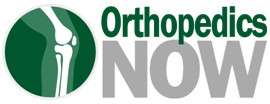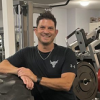Premier - Local Orthopaedic Surgeon
-
Cycling Injuries
Although superficial soft tissue injuries and musculoskeletal trauma are the most common injuries, head injuries are responsible for most fatalities and long-term disabilities. Overuse injuries may contribute to a variety of musculoskeletal complaints, compression neuropathies, perineal and genital complaints.
-
Loading the player...
Patellofemoral Pain - Knee Pain in Cycling <p>physiotherapist, discusses patellofemoral pain syndrome.</p>physiotherapist, discusses patellofemoral pain syndrome.
-
Patellofemoral Pain - Knee Pain in Cycling
There are a few cycling technique faults that contribute to patellofemoral pain syndrome. One is pedaling in too big a gear. A lot of people and unicyclists tend to want to push a hard gear. That type of low cadence pedaling really adds the compression forces behind the knee cap, so it’s really important to get a good spin.
The other aspect is knee alignment while pedaling. When you look down at your knee when youre pedalling that knee should track in a linear path, shouldn’t be a lot of side-to-side motion. That’s been shown in the research to really contribute to patellofemoral pain syndrome.









